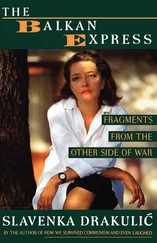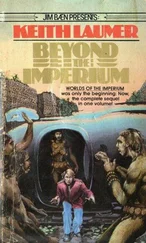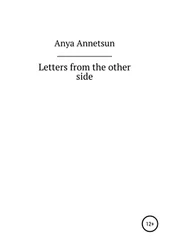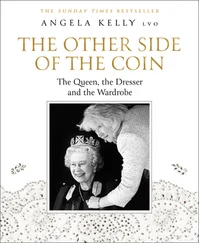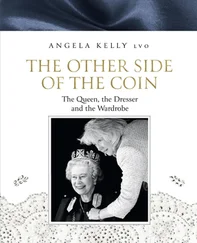So even though I was soon earning good money as an English teacher in Tel Aviv, I could not simply accept the privileges that came with being a successful ‘new Israeli’. A few months after I had recovered from the eye operation, I was approached by a student organisation called Mahapach, which had heard of my experience in community work and raising money for Aids charities in London. They asked if I could write a funding application in support of their work for disadvantaged communities inside Israel, particularly the indigenous Arab population and the community of Jews of Middle Eastern descent, known in Israel as the Mizrahim. Much of Mahapach’s work involves encouraging students to go into deprived communities to teach such youngsters core subjects like Hebrew, Arabic, English and maths outside the often limiting arena of the formal classroom.
I sat down and read about these communities and their problems. I knew about the difficulties of the Mizrahim, who because of their Arab culture—they originally came from Morocco, Iraq, Syria and Egypt—have long been treated as inferior Jews by the European elite, the Ashkenazi Jews, who run Israel. But questions quickly began to surface in my mind about the indigenous Arab communities. Where did these Arabs I was writing about live? Why had they been so invisible, except briefly when I was in hospital, during my first two years in Israel? In those days I had little time for anything except my work as an English teacher. I would usually be up at 5 a.m., start work at six (before my clients’ offices opened), and finish at 8 or 9 p.m. Still, I was not satisfied with simply regurgitating the dry statistics I found in newspaper articles which suggested that Israeli Arabs were discriminated against. They were as faceless and unconnected to my life as bacteria living at the bottom of the ocean. I wanted to meet these Arabs for myself. When the chance arose to visit an Arab town as part of the research, I leapt at it. The destination was Tamra in the western Galilee.
Within minutes of driving into Tamra I felt that I had entered another Israel, one I had never seen before. It was almost impossible to believe that I could turn off a main highway, close to the luxurious rural Jewish communities of the Galilee, and find myself somewhere that was so strikingly different from any Jewish area I had ever visited before, and not just culturally. It was immediately obvious that Tamra suffered from chronic overcrowding. The difference in municipal resources and investment was starkly evident too. And a pall of despair hung over the town, a sense of hopelessness in the face of so much official neglect. It was the first time I had been to an Arab area (apart from visits as a tourist to the Old City of Jerusalem), and I was profoundly shaken by it. A disturbing thought occurred to me, one that refused to shift even after I had driven back to Tel Aviv. Tamra looked far too familiar. I thought, where have I seen this before? I recognised the pattern of discrimination from my experience of apartheid South Africa, which I had visited regularly during my childhood. I could detect the same smell of oppression in Tamra that I had found in the black townships.
These initial impressions were reinforced by a meeting at the home of Dr Asad Ghanem, who lives in the neighbouring village of Sha’ab. One of the few prominent Arab academics in Israel, Dr Ghanem impressed me with his direct and unemotional explanations of the discrimination exercised in all spheres of Israeli life against the Arab population, from employment and education to land allocations and municipal budgets. But he found it difficult to remain detached about one topic he brought to my attention, an issue that would later become the theme of many conversations with my new Arab neighbours and friends. In Arab communities across Israel there are tens of thousands of homes judged illegal by the state, and under threat of demolition. In Tamra, Dr Ghanem told me, there were 150 homes facing destruction. Intermittently the police would target an Arab community, bringing in bulldozers at the crack of dawn and tearing down the illegal homes. The razing of these buildings, some of them up to four floors high, might mean dozens of extended families, comprising hundreds of people, were made homeless at a stroke.
I knew from my research that there was widespread illegal building in Arab communities, which was represented by the Israeli authorities as the act of law-breakers, people who were squatting on state land or who did not want to pay for a building licence. But as Dr Ghanem pointed out, no one chooses to invest their life savings and their dreams in a home that could be razed at any moment. Arab families have been forced to build illegally because in most cases the state refuses to issue them with building permits. And then he delivered the knockout blow: he told me his own beautiful home was illegal and threatened with demolition.
There can be little doubt that the land on which Dr Ghanem’s home stands has belonged to his family for generations. From the salon, visitors can see the old stone foundations of his grandparents’ house. A few years ago he had decided, with the arrival of his own children, that he and his wife Ahlam could no longer live in his parents’ apartment; they would build a home on the only land the family had left. But the authorities refused him a building permit. Effectively branded criminals by the state—like tens of thousands of Arab families—he and Ahlam had been paying regular heavy fines ever since, as much as £15,000 sterling a time, to ward off demolition. Their lives have become a routine of paying the state to prevent the destruction of everything they hold dear.
The question that echoed in my mind as I heard Dr Ghanem’s story was: where were he and his family supposed to live? What was the future envisaged for them by the state? I knew well that there were endless housing developments springing up all over Israel, and illegally in the occupied territories, for Jewish families. But where was the next generation of Arab citizens to live? Dr Ghanem and Ahlam are the pillars not only of their own community in Shaab, but of the whole Arab community inside Israel. Nonetheless, the state is forcing them to live with a terrible threat hanging over their heads. They are raising their children in an environment of continual insecurity. Every day when they leave home they do not know whether they will return to find a pile of rubble. They have been made to live in an unstable world which I have no doubt is deeply damaging to them and their children.
My meeting with Dr Ghanem ended uncomfortably. In a matter-of-fact tone he asked me whether I had made aliya, whether I had claimed my right as a Jew to come to live in a country from which the overwhelming majority of his people had been expelled little more than half a century earlier. These Palestinians still live in refugee camps across the Middle East, refused the opportunity to return to their former homes in Israel. It was the first time I hesitated to answer this question. I understood that my privileges as a Jewish immigrant had come at the expense of his people. Sitting in his home, reality finally hit me. The intoxicating power trip had come to an abrupt halt.
As is my way, I could not live long in ignorance. So I began the long and difficult task of becoming informed. I read and absorbed anything I could find on the position of the Israeli Arabs, questioning the official narrative. My left-wing friends in Tel Aviv, mainly academics and people working in non-profit organisations whom I had met through a fellow inmate of the absorption centre, were quick to reassure me they had Arab friends. I asked who exactly were these friends? Where did they live? What did they talk about together? The reply was always more or less the same. They were on good terms with the owner of an Arab restaurant where the felafel was excellent. Or they got their car fixed in a garage in an Arab village where the prices were low. What did they talk to these ‘friends’ about? When did they meet outside these formal relationships? What intimacies did they exchange? The Tel Aviv crowd looked at me aghast, as if I were crazy. They did not have those sorts of relationships with Arabs.
Читать дальше

